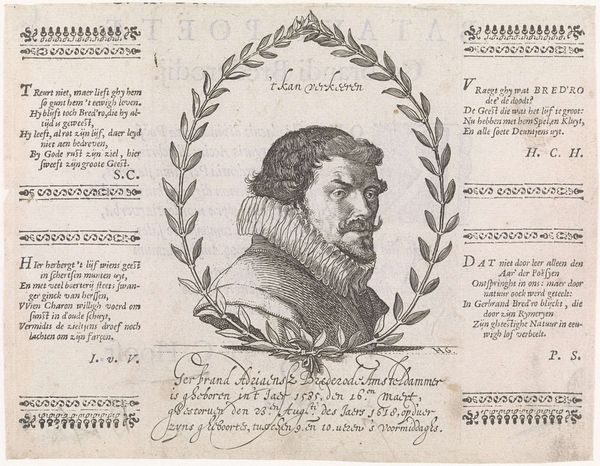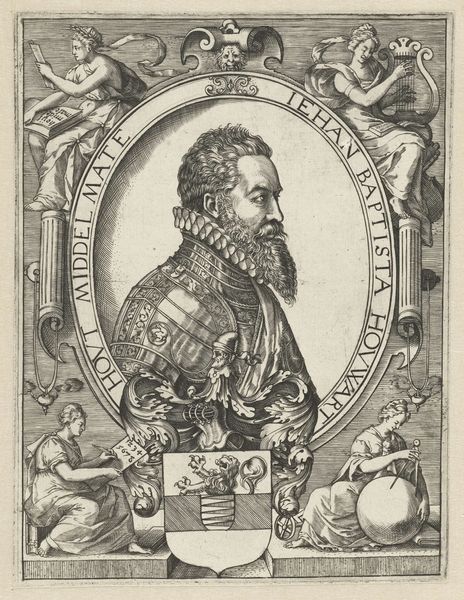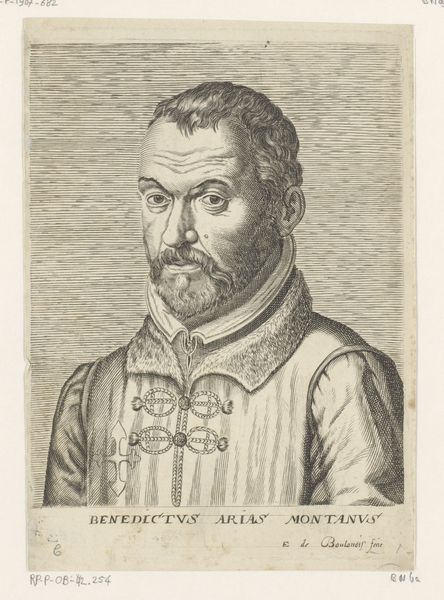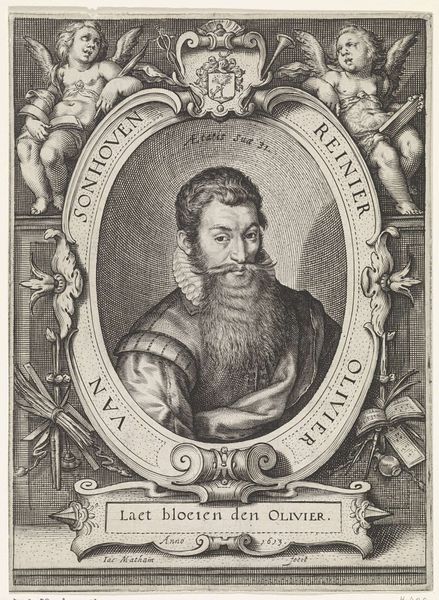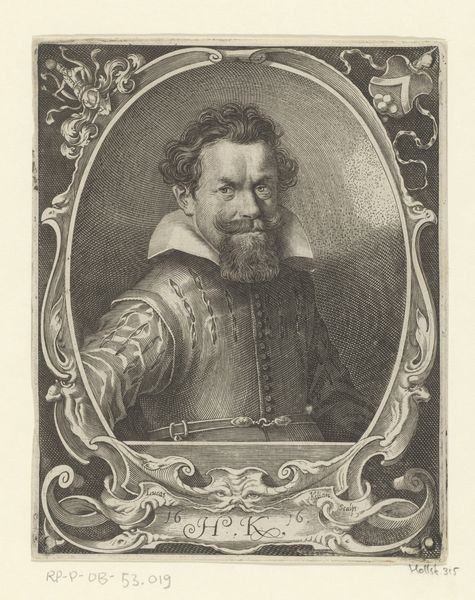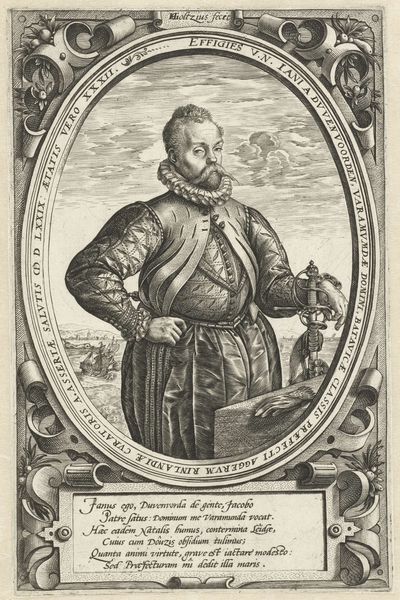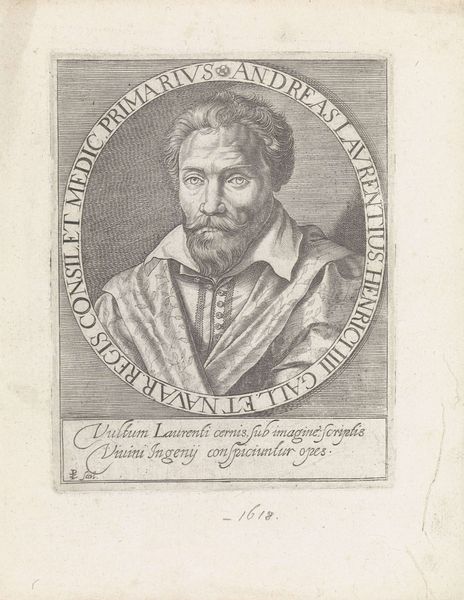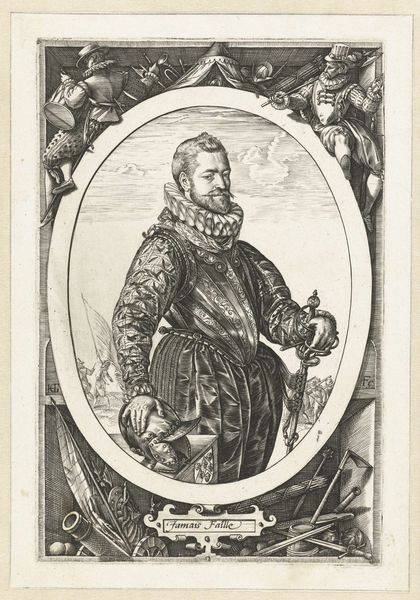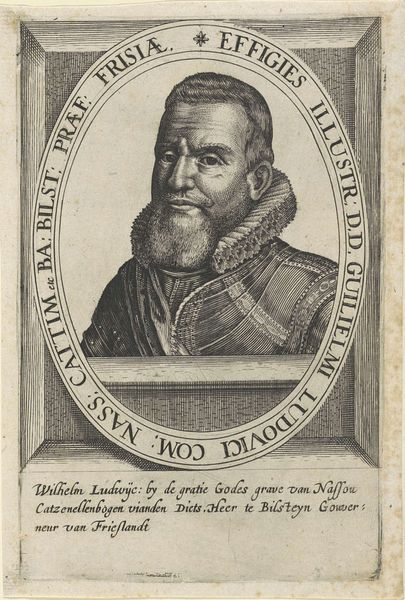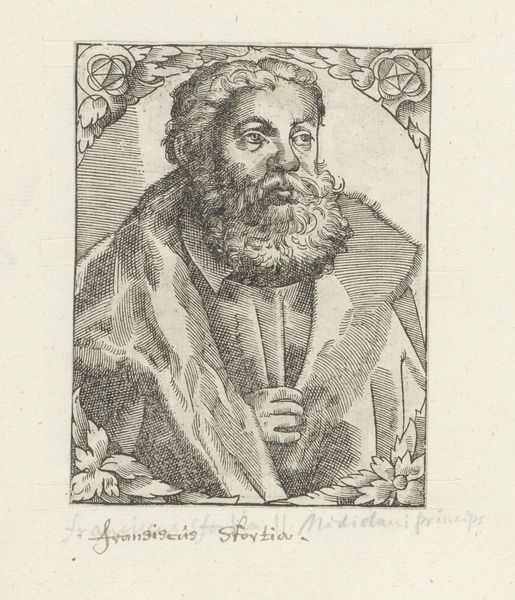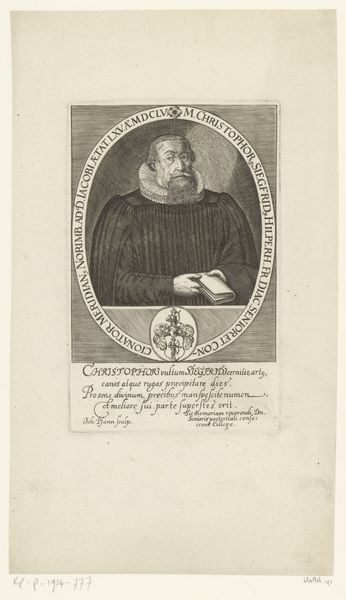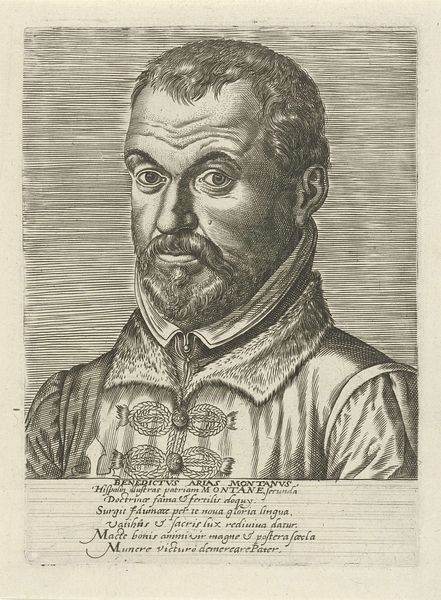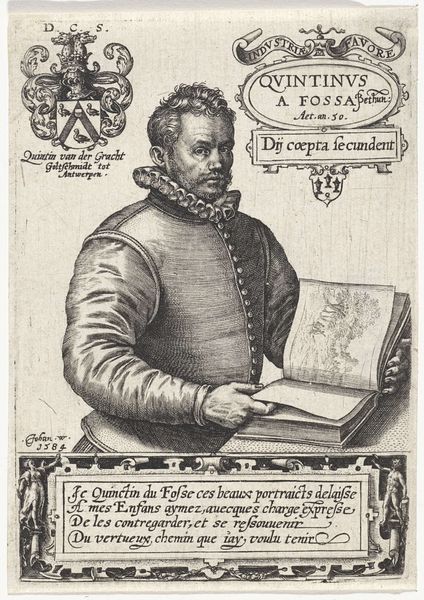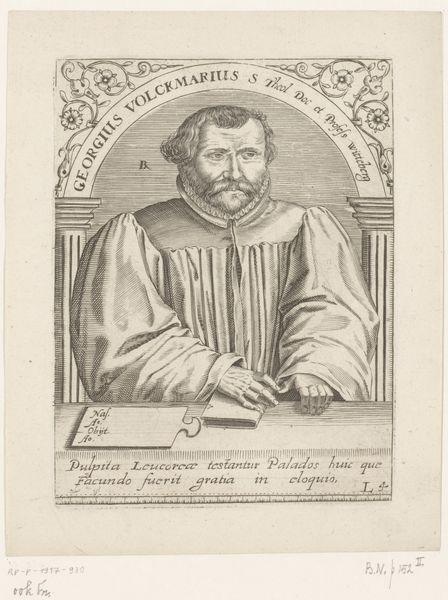
print, engraving
#
portrait
#
baroque
# print
#
old engraving style
#
history-painting
#
engraving
Dimensions: width 95 mm, height 132 mm
Copyright: Rijks Museum: Open Domain
Curator: Take a look at this engraving, “Portret van Gerbrand Adriaensz. Bredero,” a print created sometime between 1618 and 1632, currently housed in the Rijksmuseum. It's by Hessel Gerritsz. What are your initial thoughts? Editor: Stark, very controlled. The intense gaze, combined with the tightly controlled lines of the engraving…it feels quite formal and rigid. I wonder about the subject, Gerbrand Bredero. Curator: Bredero was a playwright and poet during the Dutch Golden Age. Gerritsz's choice to depict him in this medium speaks volumes. The lines, hatched meticulously, construct form and convey texture economically. Note the details on the ruff collar—a symphony of short strokes creating dimension. Editor: The ruff practically screams social status. A deliberate symbol. Also, the print medium itself suggests wider accessibility—were these images intended to circulate Bredero's image and, by extension, his ideas? Was this political? Curator: Exactly! Consider the wreath. The controlled curvature surrounding Bredero adds to the geometric composition, emphasizing order and purpose. It hints at a calculated, almost propagandistic use of visual imagery to establish cultural legitimacy and ensure the recognition of Bredero’s accomplishments after his passing. Editor: That shifts my understanding. It’s not just a portrait; it’s a statement of enduring legacy. But also, this particular printing method suggests that we are now only able to see one of what may have been many iterations that circulated among a community of people with access to this person’s life and ideology. Curator: And don't miss the phrase " 't kan verkeeren" above his head. Its prominence reveals the image maker’s emphasis on Bredero’s own awareness of fate’s uncertainties, serving as a final and universal truth Bredero might express to any contemporary viewers. Editor: The interplay of formal composition and historical context offers insight not only into Bredero as an individual but also into the societal function of the arts in early modern Europe. Curator: Agreed. Studying Gerritsz's artistic strategy broadens our comprehension of this particular moment’s aesthetics. Editor: Absolutely; a potent combination of technique and historical placement can provide viewers with insight beyond what Bredero could ever give with a script alone.
Comments
No comments
Be the first to comment and join the conversation on the ultimate creative platform.
